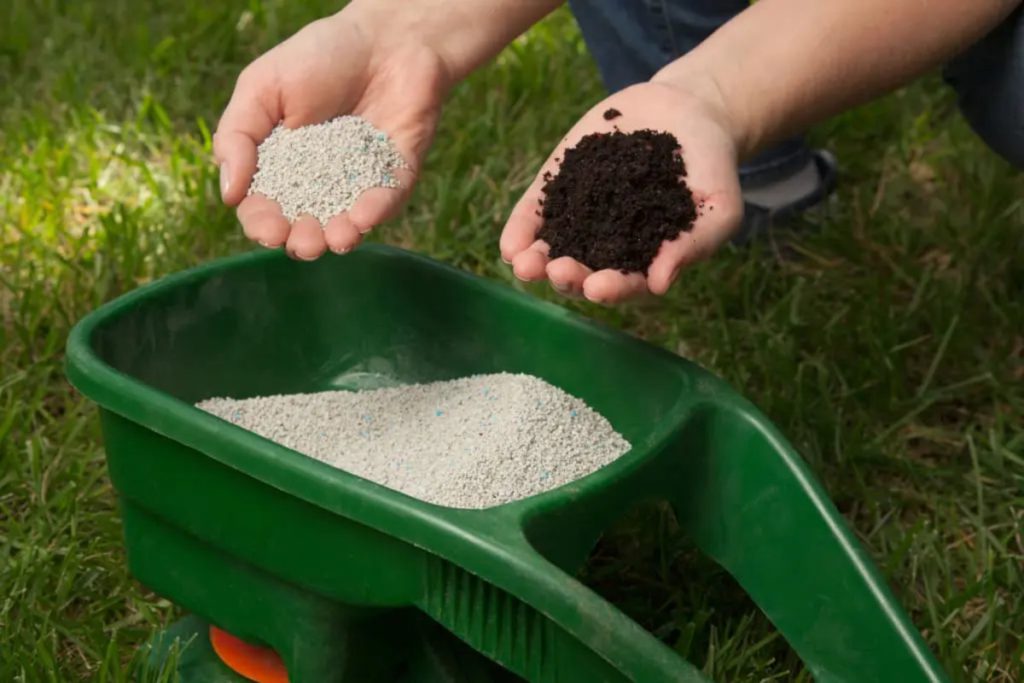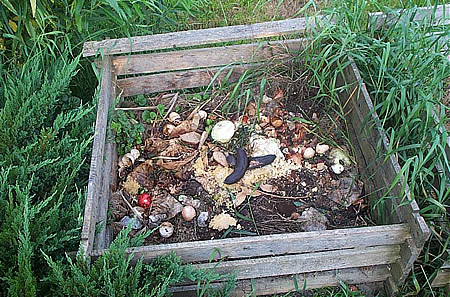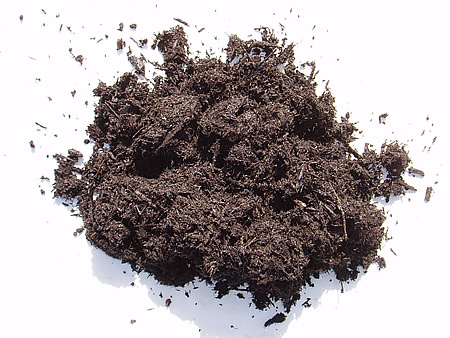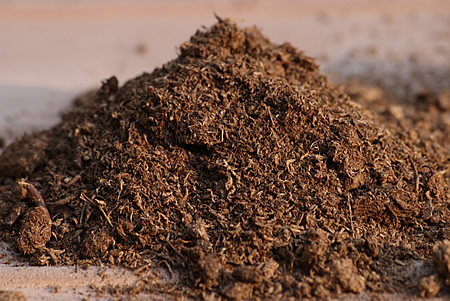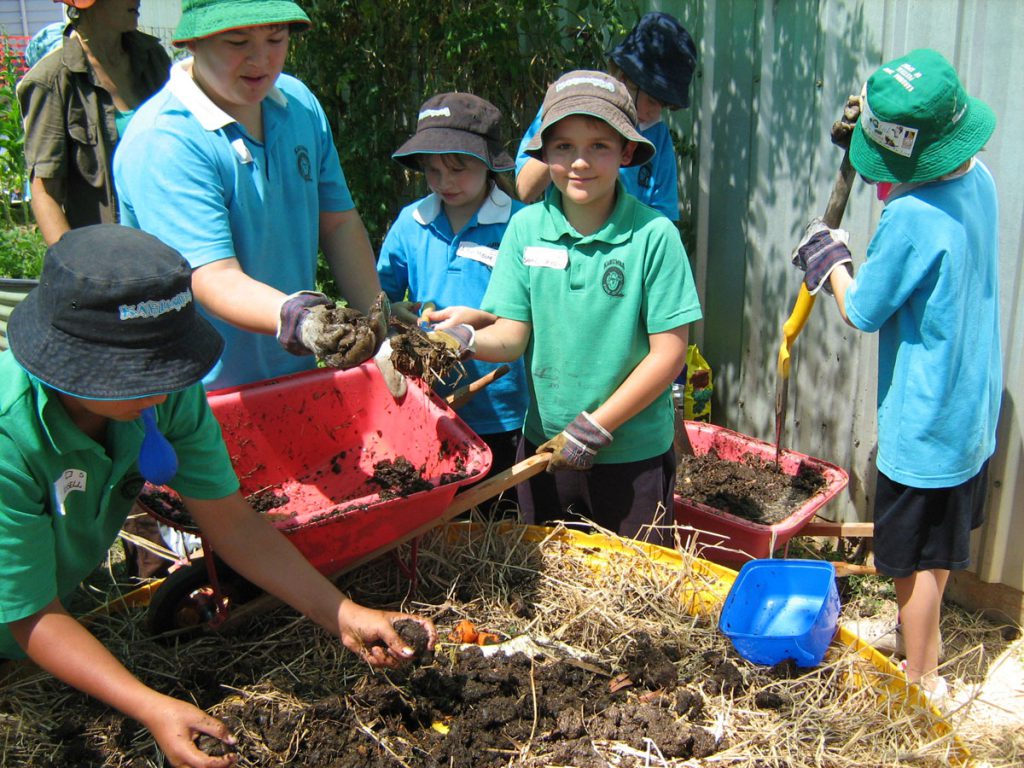Be careful about mixing chemical and organic fertilizers. Read carefully the following fertilizer mixing advices. Be sure that you won’t do bad instead of good.
Be careful what Chemical and Organic fertilizers you mix
Be careful what chemical (synthetic) and organic fertilizers you mix. Do not mix nitrogen fertilizers containing ammonium (NH4) with fertilizers containing calcium (Ca) because you lose the nitrogen!
We don’t mix fertilizers containing calcium with phosphorus (P2O5) fertilizers whose form is soluble in water because it becomes insoluble! Do not mix fertilizers that turn into sludge after mixing…
In our garden together with organic fertilizers we can also add ammonium sulphate and potash fertilizers.
Also, if we decide to add manure and nitrate fertilizers, we should wait 3-4 weeks between applications. Finally, manure or urine with organic residues should not be applied at the same time as a calcium fertilizer but wait 8-12 weeks at least.
Some examples, so we don’t do bad to our plants instead of good!
Manure
Manure can be mixed with ammonium sulphate, potassium chloride, potassium sulphate, potassium magnesium sulphate and urine.
It cannot be mixed with urea, ammonium nitrate, ammonium calcium carbonate, calcium nitrate and rust.
Ammonium sulphate
Ammonium sulphate may be mixed with superphosphate, potassium chloride, potassium sulphate, potassium magnesium sulphate and manure.
It cannot be mixed with calcium cyanamide, ammonium calcium carbonate, calcium nitrate, calcium nitrate, urine and slag.
Ammonium nitrate
Ammonium nitrate shall be mixed immediately before use with ammonia sulphate, urea and potassium sulphate.
It cannot be mixed with calcium cyanamide, ammonium calcium carbonate, calcium nitrate, calcium nitrate, superphosphate, potassium chloride, potassium magnesium sulphate, manure, urine and slag.
Calcium nitrate
Calcium nitrate is not mixed with any.
It is not commonly mixed with calcium oxide, calcite, calcium oxide or slag.
Potassium chloride
Potassium chloride is mixed with ammonium sulphate, superphosphate, potassium magnesium sulphate, manure and urine.
It is not compatible with ammonium nitrate and calcium nitrate. However, it can be mixed directly before use with calcium cyanamide, urea, ammonium calcium carbonate, potassium sulphate and slag.
Potassium sulphate
Potassium sulphate is mixed with ammonium sulphate, urea, superphosphate, manure, urine and rust.
It does not mix with calcium cyanamide, ammonium calcium carbonate and calcium nitrate.
Chemical (Synthetic) fertilizers
Chemical (synthetic) fertilizers, depending on the immediacy of their use, are divided into basic and surface fertilizers.
Basic fertilizers are used before sowing or planting for annual plants and before the onset of germination for perennials. Basic fertilizers are ammonium sulphate, urea, potassium sulphate, etc.
Surface fertilizers are those that serve as a supplementary nitrogen and potassium fertilizer during plant growth. Such fertilizers are calcium nitrate, ammonium nitrate, potassium nitrate, etc.
And let’s look at their categories.
Nitrogen fertilizers
Nitrogen fertilizers in the form of ammonium are used in alkaline soils while in the nitrate form in acidic soils.
The main nitrogen fertilizers are:
- Ammonium sulphate (NH4)2SO4: contains 21% nitrogen. It is the most common basic fertilizer and is used before sowing or planting. The systematic use of this fertilizer causes acidification of the soil because ammoniacal nitrogen is not easily removed by rainwater and is not directly assimilated by plants. It is used on calcareous soils and not on acid soils.
- Ammonium nitrate NH4NO3: contains 33.3 % nitrogen. It also causes acidification of the soil and to avoid this it is recommended to use limestone and in a quantity of up to 500 grams in 1 kg of ammonium nitrate.
- Calcium nitrate ammonia NH4NO3+CaCO3: contains 15.5-20.6 % nitrogen. It is a surface fertilizer and is used as a supplement to nitrogen nutrition.
- Ammonium nitrosulphate NH4NO3+(NH4)2SO4: contains 26% nitrogen and 16% sulphur. The fertilizer is similar to ammonium nitrate in terms of its soil behavior.
- Sodium nitrate NaNO3: contains 16 % nitrogen and is readily assimilated by plants, is not retained in the soil and is easily washed away by rainwater. It is a basic fertilizer and is very much used for vegetables, wheat and barley.
- Calcium nitrate Ca(NO3)2: contains 15.5 % nitrogen and 19.5 % calcium. We use it for surface fertilization, it is the fertilizer taken up by plants in times of drought and is very beneficial. It is recommended to use it on non-calcareous soils.
- Urea CO(NH2)2: contains the most nitrogen of all, 45-46%, it is an organic fertilizer, soluble, nitrogen changes form quickly from ammonia to nitrate and in the soil it has an acidic effect. Special care is needed in its use because of its high nitrogen content.
Phosphorous fertilizers
Phosphorous fertilizers are used either before sowing or before planting, with the exception of phosphoric acid.
The main phosphorous fertilizers are:
- H3PO4 phosphoric acid: contains 55% phosphorus. It is mainly used in alkaline soils always with irrigation/irrigation water, not alone (it is an acid with a high phosphorus content and very active). It reduces the pH of the soil and increases the solubility of the trace elements zinc, iron and manganese.
- Simple Ca(H2PO4)2+CaSO4 superphosphate: contains 18-22 % phosphorus and consists of a mixture of calcium monocalcium phosphate and calcium sulphate and small amounts of iron, aluminum and magnesium salts.
- Ca(H2PO4)+CaSO4 superphosphate composites: similar to simple but denser. They contain 46-47 % phosphorus and their soil behavior is the same as that of the simple ones.
- Hyperphosphate with ammonia NH4H2PO4+(NH4)2SO4: contains 16 % nitrogen and 20 % phosphorus.
- Calcium phosphate Ca(HPO4)2: contains 38-40% phosphorus; it is recommended for all soils but is mainly preferred in acid soils.
- Basic slag CaNaPO4+CaSO4: used as an improving fertilizer for acid soils.
Potassium fertilizers
Potassium fertilizers are applied in basic fertilizations.
The main potash fertilizers are:
- Potassium chloride KCl: contains 54% potassium and 4% sodium chloride (NaCl). It is applied 2-3 weeks before sowing or planting but with caution because many crops are sensitive to chlorine.
- Potassium sulphate K2SO4: contains 54% potassium, it has to do with the quality of the fruit and the color of the flowers.
- Potassium nitrate KNO3: contains 44% potassium and 13% nitrogen. It is directly assimilated by plants but is applied through fertigation.
- K2SO4+MgSO4 potassium magnesium sulphate: contains 18% potassium, 11% magnesium and 18% sulphur. It dissolves easily in the soil and is suitable for all soils.
- Potassium metaphosphate K3PO4: contains 33% potassium and 27% phosphorus.
Magnesium fertilizers
In acidic soils we use dolomite, while in alkaline soils we use magnesium sulphate, kieserite, potassium magnesium sulphate and EPSOM salts. For transhumance, however, magnesium nitrate and magnesium sulphate at a concentration of 1 % are preferred.
The main ones are:
- Keyserite MgSO42H2O: the best known magnesium fertilizer, it combines well with other fertilizers and is suitable for organic farming. It is of great importance for the color of the leaves.
- Dolomite CaMg(CO3)2: can be combined with sulphur fertilizers.
- EPSOM salts MgSO47H2O: in essence it is a detoxifying salt and is used when magnesium deficiency is observed. It has other properties and is used in medicine and in cleaning.
Sulphur fertilizers
Used mainly to improve the alkalinity of the soil. The best known are elemental sulphur and some of its derivatives, such as sulphuric acid (H2SO4), aluminum sulphate [Al2(SO4)3], iron sulphate [Fe2(SO4)3] and gypsum.
Trace element fertilizers
Trace elements are found in the soil in quantities sufficient for plant growth or are applied with fertilizers. If their concentrations exceed the permitted limits, they are toxic to plants and should therefore not be exceeded. The main elements are: iron, manganese, copper, zinc, molybdenum, boron, cobalt and chlorine.
Iron fertilizers
Iron deficiency in plants can be treated either by adding iron fertilizers or by spraying the leaves with a solution. Foliar spraying is more effective, while organic forms of iron give better results when applied to the soil.
The main iron fertilizers are:
- Iron sulphate [FeSO47H2O]: used to spray the leaves with a 4-6% concentration solution.
- Chemical iron compounds: these are compounds which, when added to the soil, remain assimilable for a long time. The appropriate quantity for trees is 10-20 grams per tree when applied to the soil, while for application to leaves it is 0.5-1 grams per 10 m2 . The most effective and widely used compounds are: Fe-EDTA for acidic soils, Fe-HEDTA more effective in calcareous soils, Fe-DTPA resistant in calcareous soils and Fe-EDDHA which is preferred in calcareous soils because of its stability. The first three compounds cause toxicity so be careful with the dosage.
Zinc fertilizers
The chelated forms are effective in soil, but there is a possibility in very acidic soils that zinc may be present but not in an assimilable form and toxicity may result. The use of pesticides containing Zn is often sufficient to meet the needs of plants. Zinc deficiency is often found in corn, peach and citrus fruits.
The main zinc fertilizers are:
- Zinc sulphate [ZnSO47H2O]: applied either from the soil at a rate of 5 to 10 g/10 m2 or by spraying a solution of 5 g of zinc sulphate and 2.5 g of slaked lime in 1 kg of water.
- Other forms used are: Zn-EDTA, ZnO, ZnCO3, Zn(PO4)2.
Manganese fertilizers
Most commonly used is manganese sulphate MnSO4, which is either added or sprayed. When spraying, this compound is used at a content of 0.6-1.2 % with Ca(OH)2. The quantity used in the soil varies between 4-40 g/10 m2 .
Copper fertilizers
The most common is copper sulphate [CuSO45H2O]. The quantities added to the soil are between 7 and 14 g/10 m2.
Boron fertilizers
Every year a quantity of boron of 0.02-0.6 g/10 m2 is removed from the soil. Special care must be taken with this element because the required quantity and the quantity that causes toxicity are very close. Boron compounds are also used as herbicides.
The main boron fertilizers are:
- Borax [Na2B4O710H2O]: contains 16% boron. The recommended dose is 10-40 grams. When spraying our foliage we use half the amount but of course we prefer to fertilize the soil because it lasts longer.
- Colemanite [Ca2B6O115H2O]: it is preferred in sandy soils because it is less soluble than borax.
- Liquid borate fertilizers: we use them for spraying mainly but they can also be added to the soil.
Molybdenum fertilizers
Fertilization with these fertilizers is repeated every 3-5 years.
The main molybdenum fertilizers are:
- Ammonium molybdate (NH4)2MoO4: white crystals that dissolve in water.
- Sodium molybdate (Na2MoO4): the dosage for spraying in a 10 m2 garden is 0.018 – 0.036 grams. A similar amount is used for the soil.
Cobalt fertilizers
Cobalt (Co) is added with phosphate fertilizer, cobalt-containing superphosphate. It can be used in a quantity of 5 g/10 m2 .
Chloride fertilizers
Potassium chloride (KCl) is a fertilizer with a high potassium content and is not particularly easy to use because of its chlorine concentration. Ammonium chloride (NH4Cl) is derived from the decomposition of nitrogenous organic compounds.
Organic fertilizers and fertilization
Soil organic matter is the residues, plant and animal, in various stages of decomposition.
These residues come from previous crops, from soil micro-organisms and from the addition of organic fertilizers.
The organic matter, every year is decreasing and if this difference is not replenished, then gradually the productivity of our soil is deteriorating. The main sources of soil organic matter enrichment are: use of manure or compost, use of peat, green manure and proper crop rotation. Let’s look at them in detail.
Manure
Manure comes from mixing solid and liquid animal excrement along with material such as hay, straw and others. Its fertilizing value is great but it depends mainly on the type of animal, conditions of keeping and proper use.
Mature’ manure has to go through a fermentation phase, which takes 3-4 months. This is the period when the manure is digested and digestion takes place in heaps. To avoid nitrogen loss, the pile is covered with a thin layer of soil and occasionally moistened with animal waste. After spreading it in the garden, we plough it off (as much as we can) to prevent it from losing its fertilizing properties. If our soil is light, we need to spread it deeper.
In order to preserve it well and for it to be digested, it is good to put the manure in a pit, in which we make successive layers of manure (30-40 cm) and in between we have thin layers of soil, on which we spread superphosphate fertilizer on the surface in the amount of 6-8kg/m2.
After filling the pit, we wet it with animal fluids if we can, otherwise we use a solution of 400 grams of ammonia sulphate in 10 liters of water. After 5-6 months the manure is ready for use, but about 15 days before using it, remove it from the pit and allow it to dry (manure should not be used fresh because it produces ammonia and is toxic). At the same time, we mix it with superphosphate (0-20-0) and the usual amount is 0.015-0.20 kg of fertilizer per kg of manure.
Proper use of manure improves the physical properties of the soil, its productivity and makes better use of inorganic fertilizers. Manure contains a lot of nitrogen and its use in large quantities can burn our crops, especially at the beginning of germination.
Compost
It is organic, soil conditioner, fertilizer and is made from organic materials. Compared to manure it is released more quickly and can be used not only as a basic fertilizer but also as a supplementary fertilizer.
Compost digestible materials:
Roots of vegetables and flowers, green grasses but because they contain a lot of water and nitrogen, we must use a small amount or dry them.
Also, twigs and peels that should be cut very well and mixed with other materials in the compost, twigs and peels of fir, pine and cypress trees, but be careful because they are difficult to rot because of the resin they contain.
Chestnut and walnut leaves in small quantities.
Also sawdust, wood shavings, chips, straw and dried grasses always with pale matter because they contain carbon dioxide.
Residues from fruit and vegetables, coffee, tea, onion skins, potatoes, carrots, which are the main ingredients of compost as they contain vitamins and trace elements.
In addition, peels of oranges, bananas, lemons, various wools, hair, ashes (containing potassium), withered flowers.
Finally, manure from stable animals (small amounts or sprinkled with water), meat, fish and other kitchen scraps, after boiling them!
Completely unsuitable ingredients for compost are stones, metal, plastic, glass, oil and paint.
Figure 2. Preparation of compost in a garden.
Cut the materials into as small pieces as possible, spread branches on the soil, spread the materials mixed in thin layers and sprinkle with nettle juice diluted 1:10. In recent years, a powder, Fertozan, is used for quick mulching which contains microbes that are activated when added to the compost.
The location of the compost in our garden: we have to decide from the beginning on its permanent location because we cannot move it, know what kind of compost we want and which – how many substances we will use.
The compost cannot be in the center of our garden because it gets in the way, so we prefer the corners of the garden that are of no use to us. However, in this corner it would be good to have a bush or a tree to cast its shadow on the compost, at least in the afternoon because otherwise the organic substances will turn into a “nest” of unwanted visitors and that is something we don’t want.
Beyond that, for ornamental purposes, we can plant some perennials or shrubs to protect our compost from the wind. If and when the smell starts to get bad, we add some powdered slaked lime or we can cover the compost with a dark colored plastic material to keep the temperature stable.
In the summers we sprinkle it with water to get the humidity needed and for proper aeration we make a hole in the center of the compost, with a broomstick or whatever you can find, and put a plastic pipe, which we have drilled with a drill, 80-100 cm long and 12 cm in diameter.
There are composters on the market and their prices range from 50 euros to 110 euros. There are others that are more expensive, but I don’t think you need…
Composting process: first the micro-organisms break down substances such as proteins, amino acids, fats and carbohydrates.
After 3-4 days the temperature has reached600C, where the microorganisms continue the decomposition process. In this phase a soil thermometer is necessary to properly monitor the temperature inside the compost.
After 3-4 weeks the temperature drops to50 degrees Celsiusand we see white fibers in the compost, which are nothing but fungi. At the end of these weeks the earthworms make their appearance, which are the largest and most important representative of the beneficial soil organisms.
Lack of oxygen causes rot with a bad smell when we have an excess of water.
Figure 3. How the compost layers are formed internally, at about…
Is the compost ready? A test we were taught in school was this: in a square Styrofoam box or old deep dish, put sifted compost manure from the compost, water it down, then plant watercress seeds (it grows quickly and is an indicator of extremes) and cover them with a thin layer of manure.
We place it in a warm place and cover it with glass or some clear plastic to prevent moisture loss.
If the compost is ready, after 3-4 days the watercress seeds will have sprouted, will be green and lively. But if they sprout and are sparse and yellow, then the compost is not ready and we have to wait some more…
Peat
Peat is an organic material that contains more than 50% organic matter in dry form.
We use it as a soil conditioner and also as a substrate for making compost. It can be distinguished between black and light-colored peat.
Black peat has a pH of 5.1-6.1 and provides the soil with good drainage and good aeration. It is mainly suitable for floriculture and horticulture and can replace manure in 3-4 times the amount of manure.
The light-colored peat is used in floriculture but also in pots and as a material in the manufacture of compost.
Figure 4. Black peat.
Figure 5. Light-colored peat.
Green Manure
What is green manure?
It is the incorporation of plants into our crop in order to improve our soil. We usually plant them in the fall.
Plants used for green manuring are beans, vetch, annual clover, etc.
Vetch is suitable for calcareous soils, beans for calcareous and heavy soils and sowing is done in autumn.
Annual clover is suitable for light soils and is sown in late summer.
For green manuring to work to the benefit of our plants we need to water a little more, especially in areas where it doesn’t rain much, because there is a chance of acidity in the soil.
You can have the green manure if you have gardens, but you can also plant it in your pots, but not too much… and the pot is the big size…
Crop Rotation
It is the rotation of crops in order to preserve the organic matter and the natural properties of our soil. It can be applied to garden and field more easily but for you who have pots on a balcony I don’t think you can…
An important role in crop rotation is played by fertilization in general but also by the crop we had before. In a proper crop rotation program we should include beans, vetch, beans, clover, etc. (the well known legumes).
There are three main groups that we should rotate in the soil:
1. the clumping plants which are clover, alfalfa and legumes in general because they have a positive effect on the productive capacity of the soil,
2. the dormant plants, which are the cereals and we use them in a transitional period, and
3. consumer plants, such as vegetables, corn, cotton, etc. Keep in mind that crop rotation also contributes to biological control of pests and diseases.
An example of crop rotation is the following:
1st Year: beans, peas, cucumber, leek, celery, celery, spinach, tomato, onion
2nd Year: λάχανο, κουνουπίδι, ραπανάκι
3rd Year: potato, celery, carrot, beetroot
We don’t put them all in at once, one or two from each year.
Soil types for vegetables, ornamentals, floriculture, pots
While we’re at it, let’s do a little review on the types of soil you can use for your vegetable, ornamental and flowering plants.
- Plants soil: it is rich in nutrients that can be quickly assimilated by our plants.
- Leaf soil: contains 10-40% organic matter, is made by composting leaves, takes 2-3 years to mature and its reaction to the soil is basically neutral, slightly acidic.
- Root soil: contains 4-10 % organic matter and is obtained from the decomposition of soil containing roots after 2-3 years.
- Garden soil: is your garden soil but from the surface (top) layer.
- Forest soil: this category includes chestnut soil, bog soil, ridge soil and rush soil. With the exception of chestnut soil, the others are calcium-rich and generally poor in nutrients, so we use them according to the needs of our plants. Be careful with the chives though because they contain resin and can be bad for our plants.
Some mixes you can make at home (mostly for pots):
For houseplants: 4/6 forest soil, 1/6 compost and 1/6 sand.
For our flowers: 2 parts garden soil, 1 part compost and 1 part sand.
For plants such as gardenia, hydrangea, azalea you can make a mixture of 4 parts chestnut soil and 2 parts comfrey.
The above soil ratios are indicative, depending on the size of the pot, calculate at approx.
Read the next part of this article in How to use fertilizers and nutrients for plants.
Sofia Papazoglou Greek Agronomist
Agronomist MSc “Environmental Management”
Tags: COMPOST • FERTILIZER • FERTLIZERS • GREEN MANURE • PEAT • SOFIA PAPAZOGLOU AGRONOMIST • SOIL

